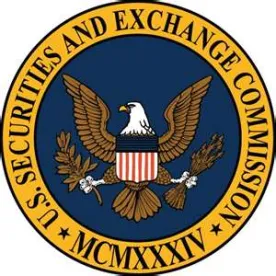Introduction
On 2 November 2020, the U.S. Securities and Exchange Commission (SEC) adopted significant amendments to the exempt offering framework under the Securities Act of 1933, as amended (Securities Act), to harmonize, simplify, and improve the existing regulatory framework (the Amendments). The Amendments follow the SEC’s June 2019 concept release and March 2020 proposing release on the harmonization of securities offering exemptions, with certain modifications in response to public comments. The SEC indicated that the Amendments will promote capital formation while preserving or enhancing important investor protections. SEC Chairman Jay Clayton issued the following statement:
For many small and medium-sized business, our exempt offering framework is the only viable channel for raising capital. These businesses and their prospective investors must navigate a system of multiple exemptions and safe harbors, each with different requirements. While each component in this patchwork system makes some sense in isolation, collectively, there is substantial room for improvement. The staff has identified various costly and unnecessary frictions and uncertainties and crafted amendments that address those inefficiencies in the context of a more rational framework that will facilitate capital formation for small and medium-sized businesses and benefit investors for years to come.
According to the SEC, the goals of the Amendments are to:
-
Establish more clearly, in one broadly applicable rule, the ability of issuers to move from one exemption to another.
-
Increase the offering limits for Regulation A, Regulation Crowdfunding, and Rule 504 offerings and revise certain individual investment limits.
-
Set clear and consistent rules governing certain offering communications, including permitting certain “test-the-waters” and “demo day” activities.
-
Harmonize certain disclosure and eligibility requirements and bad actor disqualification provisions.
The Amendments will be effective 60 days after publication in the Federal Register, except for an extension of the temporary Regulation Crowdfunding provisions, which will be effective upon publication in the Federal Register.
This alert focuses on key impacts of the Amendments on private company capital formation in the start-up and emerging growth ecosystem, including the angel and venture capital investors that support it.
Amendments
Integration Framework
The Amendments revise the Securities Act integration framework with four new safe harbors that replace the safe harbors currently established in the various exemptions.
The prior integration framework for registered and exempt offerings consisted of a mixture of rules and guidance for determining whether multiple securities transactions should be considered part of the same offering. The Amendments establish a general principle of integration that looks to the particular facts and circumstances of the offering and focuses the analysis on whether the issuer can establish that each offering either (i) complies with the registration requirements of the Securities Act, or (ii) that an exemption from registration is available for the particular offering. This facts and circumstances analysis of integration replaces the traditional five-factor test.1
The four nonexclusive safe harbors from integration are as follows:
|
Safe Harbor 1 |
Any offering made more than 30 calendar days before the commencement of any other offering, or more than 30 calendar days after the termination or completion of any other offering, will not be integrated with another offering; provided that, in the case where an exempt offering for which general solicitation is prohibited follows by 30 calendar days or more an offering that allows general solicitation, the issuer has a reasonable belief, based on the facts and circumstances, with respect to each purchaser in the exempt offering prohibiting general solicitation, that the issuer (or any person acting on the issuer’s behalf) either did not solicit such purchaser through the use of general solicitation or established a substantive relationship with such purchaser prior to the commencement of the exempt offering prohibiting general solicitation. |
|---|---|
|
Safe Harbor 2 |
Offers and sales made in compliance with Rule 701, pursuant to an employee benefit plan or in compliance with Regulation S, will not be integrated with other offerings. |
|
Safe Harbor 3 |
An offering for which a Securities Act registration statement has been filed will not be integrated with another offering if made subsequent to (i) a terminated or completed offering for which general solicitation is not permitted; (ii) a terminated or completed offering for which general solicitation is permitted and made only to qualified institutional buyers and institutional accredited investors; or (iii) an offering for which general solicitation is permitted that terminated or completed more than 30 calendar days prior to the commencement of the registered offering. |
|
Safe Harbor 4 |
Offers and sales made in reliance on an exemption for which general solicitation is permitted will not be integrated with another offering if made subsequent to any prior terminated or completed offering. |
The changes to the integration framework and safe harbors are set forth in new Rule 152. Similar to Rule 155, the new rule specifies that the safe harbors are not available for any transaction or series of transactions that are part of a plan or scheme to evade the registration requirements of the Securities Act. To ensure consistency in the application of the integration framework, the SEC plans to replace the integration provisions of Regulation D, Regulation A, Regulation Crowdfunding, and Rules 147 and 147A with references to new Rule 152.
General Solicitation and Offering Communications
The Amendments address issues presented by the term “general solicitation” and its applicability to certain events. New Rule 148 permits issuers to engage in certain “demo day” communications without violating a given exemption’s prohibition on general solicitation if the communications are made in connection with a seminar or meeting by a college, university, or other institution of higher education, state governments and instrumentalities of state and local governments, a nonprofit organization, or an incubator, accelerator, or angel investor group, provided that the angel investor group has a “defined” process and procedure for making investment decisions (though such processes and procedures do not necessarily need to be written).2 However, advertising for the event cannot reference any specific offering of securities by the issuer and the information conveyed at the event regarding the offering of securities by the issuer is limited.
In connection with any such demo day event, the sponsor is not permitted to:
-
make investment recommendations or provide investment advice to attendees of the event;
-
engage in any investment negotiations between the issuer and investors attending the event;
-
charge attendees of the event any fees, other than reasonable administrative fees;
-
receive any compensation for making introductions between attendees and issuers, or for investment negotiations between the parties; or
-
receive any compensation with respect to the event that would require it to register as a broker or dealer under the Securities Exchange Act of 19343, or as an investment adviser under the Advisers Act
If the demo day event is held online, participation in the event is limited to:
-
individuals who are members of, or otherwise associated with the sponsor organization;
-
individuals that the sponsor reasonably believes are accredited investors; or
-
individuals who have been invited to the event by the sponsor based on industry or investment-related experience reasonably selected by the sponsor in good faith and disclosed in the public communications about the event.
Rule 163B permits issuers to gauge market interest in a registered offering through discussions with qualified institutional buyers and institutional accredited investors prior to, or following, the filing of a registration statement. New Rule 241 allows an issuer to solicit indications of interest in an exempt offering orally or in writing prior to determining which exemption it will rely on to conduct the offering.
The Amendments also permit Regulation Crowdfunding issuers to “test-the-waters” orally or in writing with all potential investors prior to filing a Form C with the SEC under new Rule 206, but requires issuers to include certain legends in the testing-the-waters materials prior to filing an offering document in a manner similar to the current Regulation A.
Rule 506(c) Verification Requirements
Rule 506(c) currently permits issuers to engage in general solicitation and advertisement provided that: (i) all purchasers in the offering are accredited investors, (ii) the issuer takes reasonable steps to verify that purchasers are accredited investors, and (iii) certain other conditions in Regulation D are satisfied. Rule 506(c) provides a principles-based method for verification of accredited investor status as well as a non-exclusive list of verification methods that issuers may use when seeking to satisfy the verification requirement with respect to natural persons.4
The Amendments offer a new verification safe harbor, which allows an issuer to establish that an investor for which the issuer previously took reasonable steps to verify as an accredited investor, within the prior five years, remains an accredited investor as of the time of a subsequent sale if the investor provides a written representation to that effect and the issuer is not aware of information to the contrary. This change may alleviate investors’ privacy concerns by eliminating the need to repeatedly provide financially sensitive information to issuers. Additionally, the risk of investor harm is mitigated by the pre-existing relationship between the issuer and such investor.
The Amendments reaffirm and update the prior guidance with respect to the principles-based method for accredited investor verification in order to lessen concerns that an issuer’s method of verification may be second guessed by regulators or other market participants. The principles-based method is intended to provide issuers with significant flexibility in deciding the steps needed to verify a person’s accredited investor status and to avoid requiring uniform verification methods that may be ill-suited or unnecessary in light of the facts and circumstances. In particular, in certain circumstances, the “reasonable steps” to verify an investor’s accredited investor status may not be substantially different from an issuer’s development of a “reasonable belief” for Rule 506(b) purposes. For example, an issuer’s receipt of a representation from an investor as to his or her accredited status could meet the “reasonable steps” requirement if the issuer reasonably takes into consideration a prior substantive relationship with the investor or other facts that make apparent the accredited status of the investor.
Harmonization of Disclosure Requirements
The Amendments to the financial statement information requirements in Regulation D are intended to align them with the disclosure requirements in Regulation A. The Amendments simplify the requirements for Regulation A and create consistency between Regulation A and registered offerings by permitting Regulation A issuers to:
-
file certain redacted exhibits using the simplified process previously adopted for registered offerings and Exchange Act filings;
-
make draft offering statements and related correspondence available to the public via EDGAR to comply with the requirements of Rule 252(d), rather than requiring them to be filed as exhibits to qualified offering statements;
-
incorporate financial statement information by reference to other documents filed on EDGAR; and
-
to have post-qualification amendments declared abandoned.
For Regulation D offerings of up to $20 million, issuers are no longer required to comply with the requirements of paragraph (c) of Part F/S of Form 1-A and provide audited financial statements and are required to comply with the requirements of paragraph (b) of part F/S of Form 1-A, which applies to Tier 1 Regulation A offerings.
For Regulation D offerings of greater than $20 million, issuers are required to provide audited financial statements and comply with the requirements of Regulation S-X similar to Tier 2 Regulation A offerings.
Furthermore, in light of the Supreme Court decision in Food Marketing Institute v. Argus Leader Media5, the Amendments revise the standard used throughout the Securities Act to allow redaction of information from certain exhibits. The Amendments remove the “competitive harm” requirement and replace it with a standard that aligns with the Supreme Court’s definition of “confidential.”
Offering and Investment Limits
The Amendments increase investment opportunities for issuers to raise capital without registration under the Securities Act in reliance on Rule 504, Regulation A, and Regulation Crowdfunding by revising current offering and investment limits for certain exemptions.
-
For Regulation A:
-
increase the Tier 2 maximum offering amount from $50 to $75 million; and
-
raise the Tier 2 maximum offering amount for secondary sales from $15 to $22.5 million.
-
-
For Regulation Crowdfunding:
-
raise the offering limit from $1.07 to $5 million; and
-
amend the investment limits for investors to no longer apply any investment limits to accredited investors and allow non-accredited investors to use the greater of their annual income or net worth as their investment limit.
-
-
For Rule 504 of Regulation D:
-
raise the maximum offering amount from $5 to $10 million.
-
Regulation Crowdfunding and Regulation A Eligibility
The Amendments address issues arising under the Investment Company Act of 1940 that may be limiting the availability of Regulation Crowdfunding for offerings of non-traditional securities. The Amendments also revise Regulation A to address recent changes permitting eligibility to issuers that are subject to the on-going reporting obligations of the Exchange Act. The Amendments to the eligibility restrictions in Regulation Crowdfunding and Regulation A permit the use of certain special purpose vehicles to facilitate investing in Regulation Crowdfunding issuers, and limit the types of securities that may be offered and sold in reliance on Regulation Crowdfunding.
Bad Actor Disqualification Provisions
The Amendments harmonize the “bad actor” disqualification provisions in Regulation D, Regulation A, and Regulation Crowdfunding, by addressing inconsistencies relate to the “look-back” period in each provision.
The Amendments standardize the bad actor disqualification provisions in Rule 506(d) of Regulation D, Rule 262(a) of Regulation A, and Rule 503(a) of Regulation Crowdfunding by adjusting the look-back requirements in Regulation A and Regulation Crowdfunding to include the time of sale in addition to the time of filing. The Amendments require an analysis at both the time of filing of the offering document and the time of the sale with respect to disqualifying bad actors from participating in an offering by adding “or such sale” to any look-back references that refer to the time of filing.
Conclusion
In summary, the Amendments usher in changes to the exempt offering framework that promote capital formation and increase investor opportunities, while also maintaining important investor protections. The SEC’s goals with the Amendments are to harmonize, simplify, and improve the existing regulatory framework, thereby reducing confusion and costs of capital formation. The Amendments provide a more rational exempt offering framework to facilitate growth and provide certainty to investors and issuers alike.
Footnotes
1 In 1962, in Release No. 33-4552, the SEC announced a five-factor test to determine whether separate offerings should be integrated. The five factors were: (1) whether the offerings are part of a single plan of financing; (2) whether the offerings involve issuance of the same class of security; (3) whether the offerings are made at or about the same time; (4) whether the same type of consideration is to be received; and (5) whether the offerings are for the same general purpose. This test was further developed through the SEC’s no action letter process (e.g., the Black Box and Squadron Ellenoff letters and their progeny) and supplemented through the adoption of Rule 155 in 2001 following the .com implosion, which saw a large number of registration statements being pulled and issuers quickly pivoting to private fundraises along with the subsequent emergence of PIPES as a popular financing structure.
2 See, e.g., the Angel Capital Association’s certification process for Established Angel Groups by clicking here.
3 In October 2020, the SEC proposed a new exemption from the broker-dealer registration requirements in the private placement context discussed in our eAlert here.
4 For a discussion of the verification requirements, see our prior eAlert here.
5 See 139 S.Ct. 2356 (2019).





 />i
/>i
